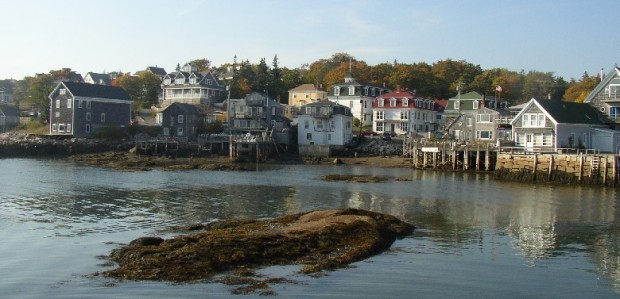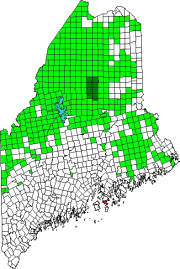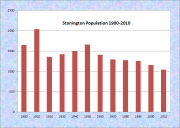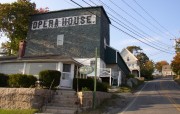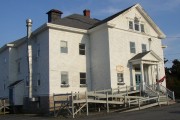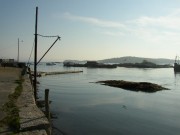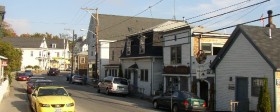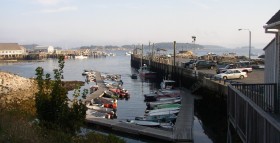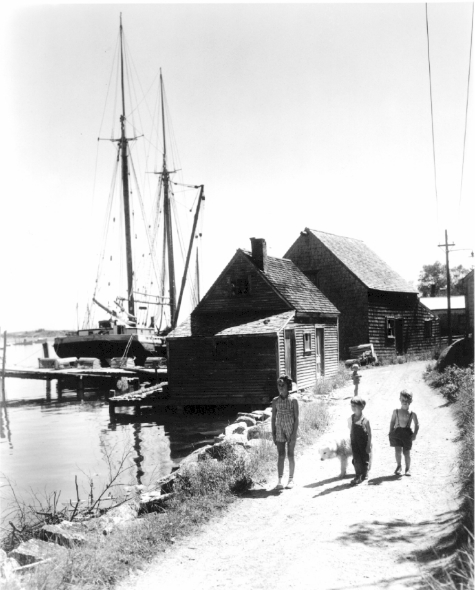does not look like an American town at all in place or architecture.
Its houses are layered down to the calm waters of the bay.
–Steinbeck
| Year | Population |
|---|---|
| 1970 | 1,657 |
| 1980 | 1,855 |
| 1990 | 1,952 |
| 2000 | 1,152 |
| 2010 | 1,042 |
| Geographic Data | |
|---|---|
| N. Latitude | 44:09:33 |
| W. Longitude | 68:38:35 |
| Maine House | District 134 |
| Maine Senate | District 7 |
| Congress | District 2 |
| Area sq. mi. | (total) 37.8 |
| Area sq. mi. | (land) 9.8 |
| Population/sqmi | (land) 106.4 |
County: Hancock
Total=land+water; Land=land only |
|
[STONE-ing-tun] is a town in Hancock County, settled in 1762 and known as Green’s Landing before it incorporated on February 18, 1897 from a portion of the town of Deer Isle. It is an island community on the southern tip of Deer Isle.
Its name implies the great granite quarries, four of which were developed after 1870 and supplied material for many buildings in New York City and the Museum of Fine Arts in Boston. The local Granite Cutters’ Unions was formed on May 1, 1891.
Fishing and, increasingly, summer residences provide the mainstay of the local economy. Stonington consistently lands more lobsters than any other port in the State.
In 1960, John Steinbeck observed,
Down by Stonington Harbor the summer boats were being pulled up for storage. An not only here but in other inlets nearby are very large lobster pounds crawling with those dark-shelled Maine lobsters from the dark water which are the best lobsters in the world. . . . There are no lobsters like these–simply boiled with no fancy sauces, only melted butter and lemon, they have no equals anywhere.
Maine Route 15 terminates at the main village, which fronts on the Deer Isle Thoroughfare, the channel separating Deer Isle from a score of off shore islands within the town boundaries.
Stonington hosts three nature preserves, the following two managed by the Nature Conservancy.
The Crockett Cove Woods forest covers 100 acres where thick mosses shroud the granite boulders, and old man’s beard lichen veils the trees. The area has a self-guiding nature trail and good bird watching opportunities.
The Wreck Island Preserve features open fields and some spruce. Once used to graze sheep the ground is covered with woodland flowers and grassy fields make up most of the interior. The high land offers views of Stonington and Isle au Haut.
Round Island is a 46 acre domed island which rises to nearly 100′. The steep cliffs and dense forest are imposing and there are no trails, but it is possible to land and walk along the shore.
Form of Government: Town Meeting-Select Board-Manager.
Additional resources
Deer Isle-Stonington Historical Society. Deer Isle and Stonington. Charleston, SC Arcadia Publishing. c2008.
Gross, Clayton H. Island Chronicles: Accounts of Days Past in Deer Isle and Stonington. Stonington, Me. Penobscot Bay Press. 1977.
Steinbeck, John. Travels with Charley, p. 52.
Stonington Past and Present: Celebrating its 100th Birthday During 1997. Stonington, Me. Penobscot Books. 1998. [University of Maine, Raymond H. Fogler Library, Special Collections; Bangor Public Library]
National Register of Historic Places – Listings
Stonington Opera House
[northwest corner of Main Street and Russ Hill Road] Built in 1912 on the site of a 19th century music hall that had burned two years earlier, the Stonington Opera House is one of only a handful of existing buildings of the type in Maine. Its exterior and interior appearance reflect a type of design peculiar to its historic function. It embodies a once common pattern of local cultural activity in Maine towns during the late 19th and early 20th centuries.
In 1886 local entrepreneur Charles Russ built a Music Hall on the present site of the Opera House. This building quickly became the cultural center of the bustling community whose growth and development were tied to the granite quarry operations on nearby Crotch Island. In 1900 it was substantially enlarged by the addition of a four story block at the south end. The addition featured first story commercial space, an apartment, a third story balcony, and portions of the enlarged stage. Renamed the Stonington Opera House, this facility is said to have been able to seat nearly 1,000 people. It burned to the ground in 1910.
In 1912 the present opera house was built. Although considerably reduced in size from the prior structure, this new facility accommodated an equal range of functions including that of a town hall (until 1951), roller skating rink, high school basketball court (until 1946-47), and a screening hall for silent movies. Under new ownership in 1928 “talkies” were first introduced to the local movie screen. By then, live shows were no longer an element in the mix of entertainment at the opera house.
In the late 1970s the Opera House changed owners. After a major rehabilitation undertaken in 1980, the building resumed its role in the community by showing movies during the summer months.
Source: United States. Department of the Interior. National Park Service. https://npgallery.nps.gov/pdfhost/docs/nrhp/text/91001509.PDF (accessed March 9, 2017)
In 2016 and 2017 it has featured live performances along with its year round movie schedule . [See photo above.]


